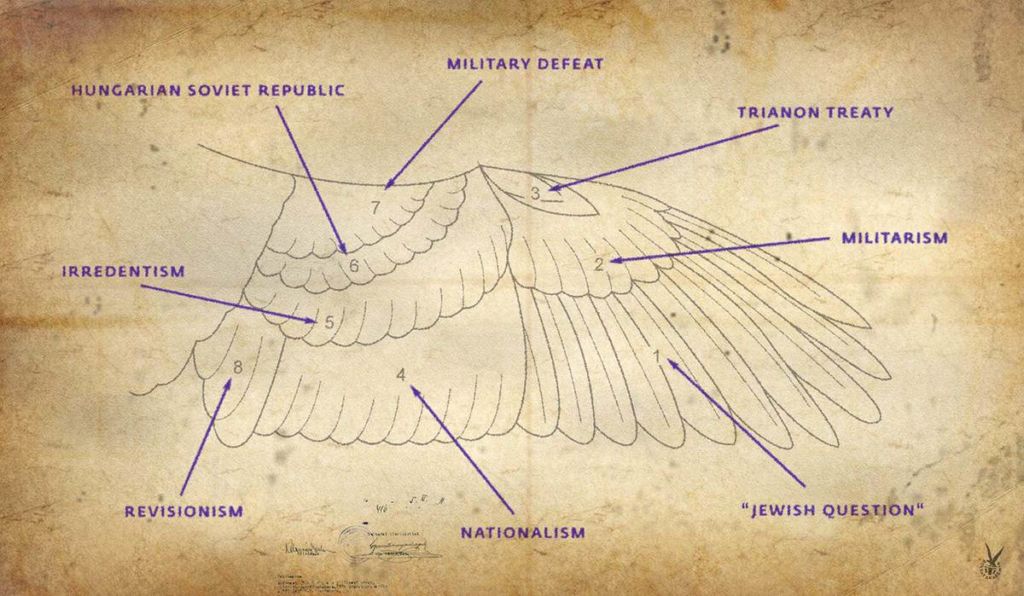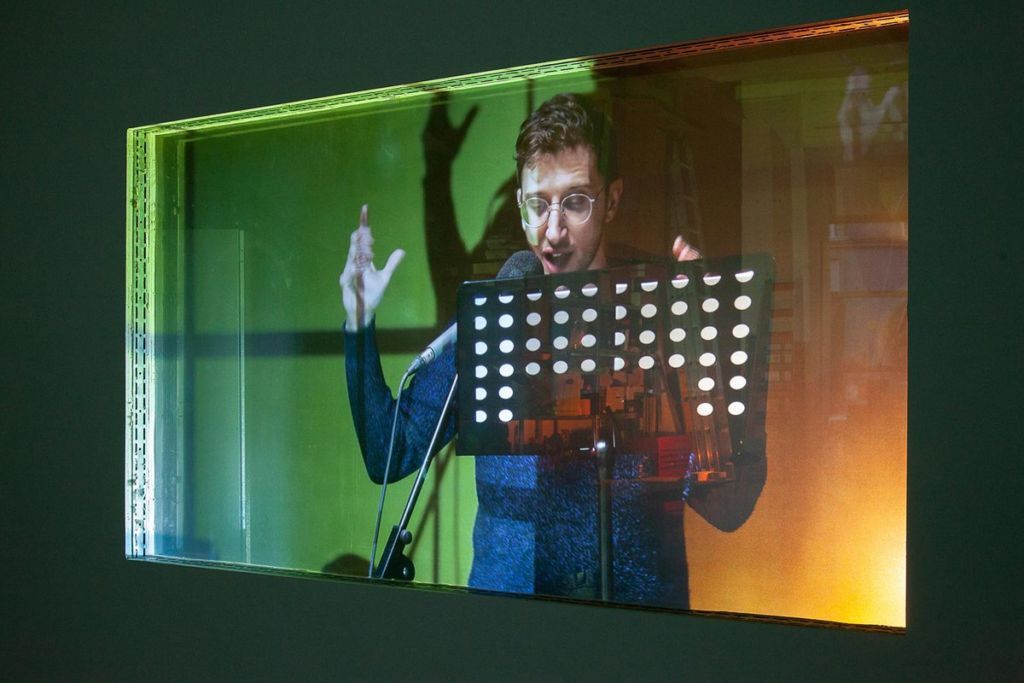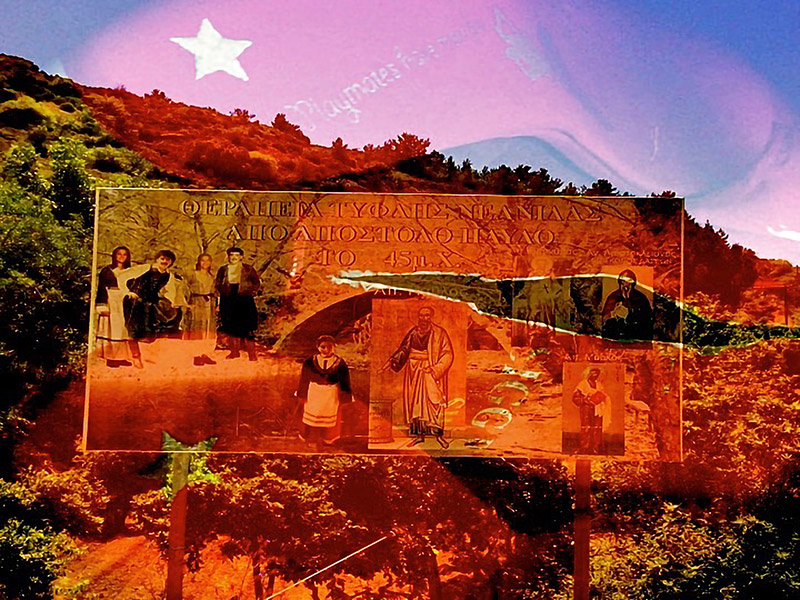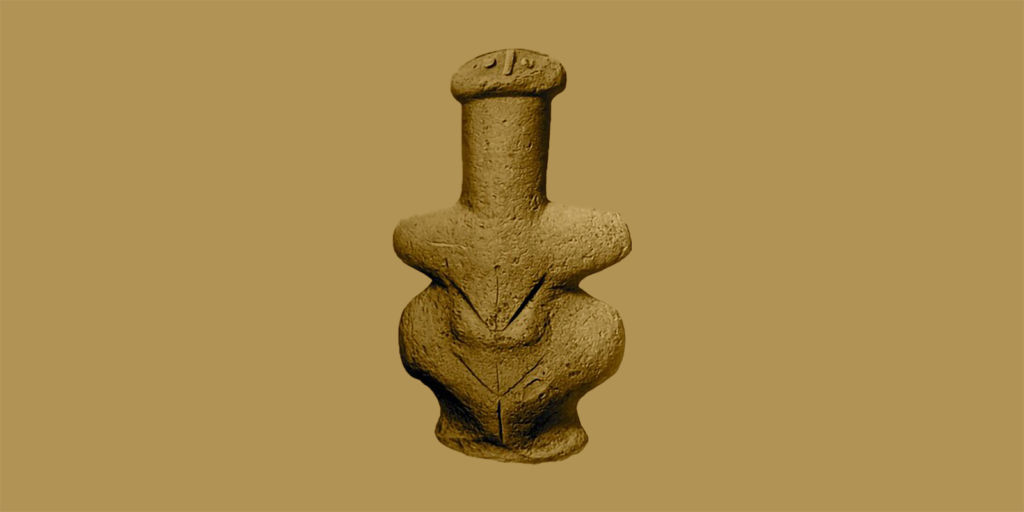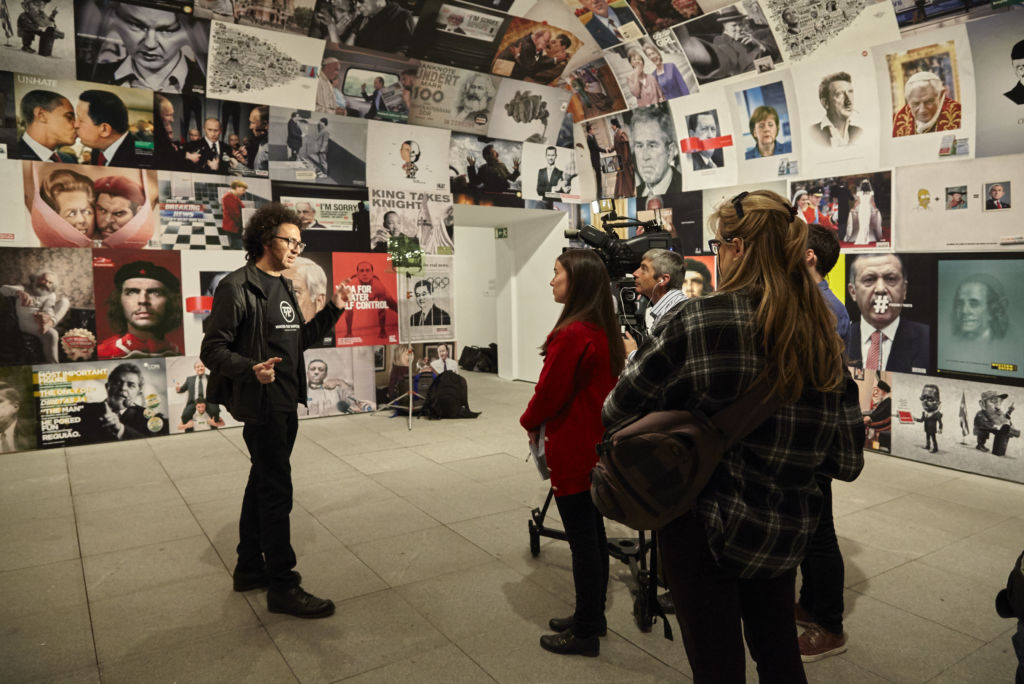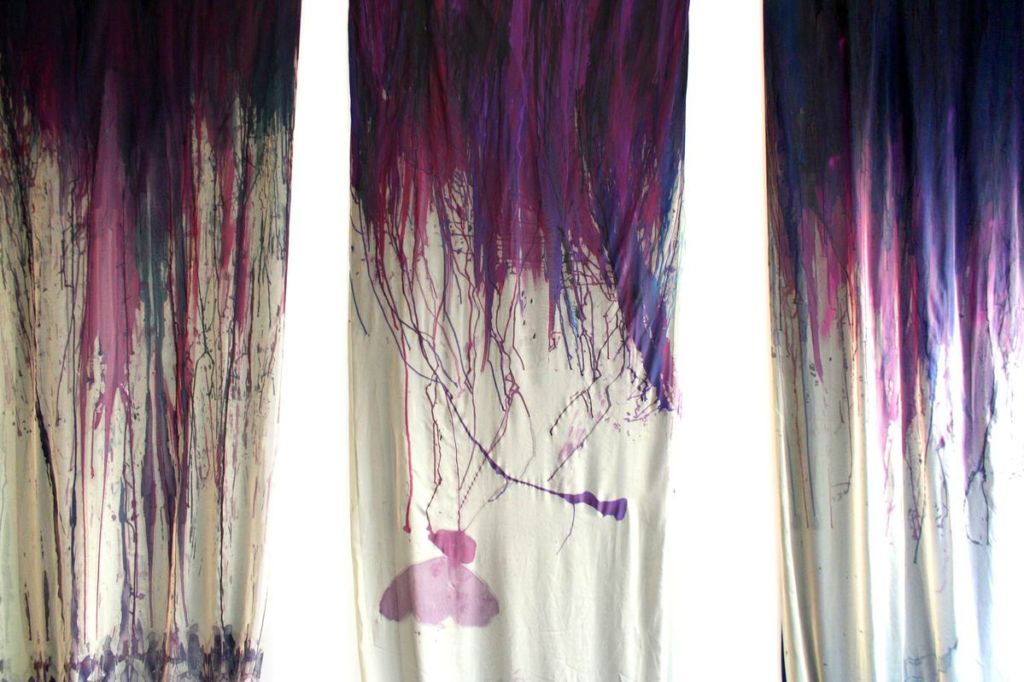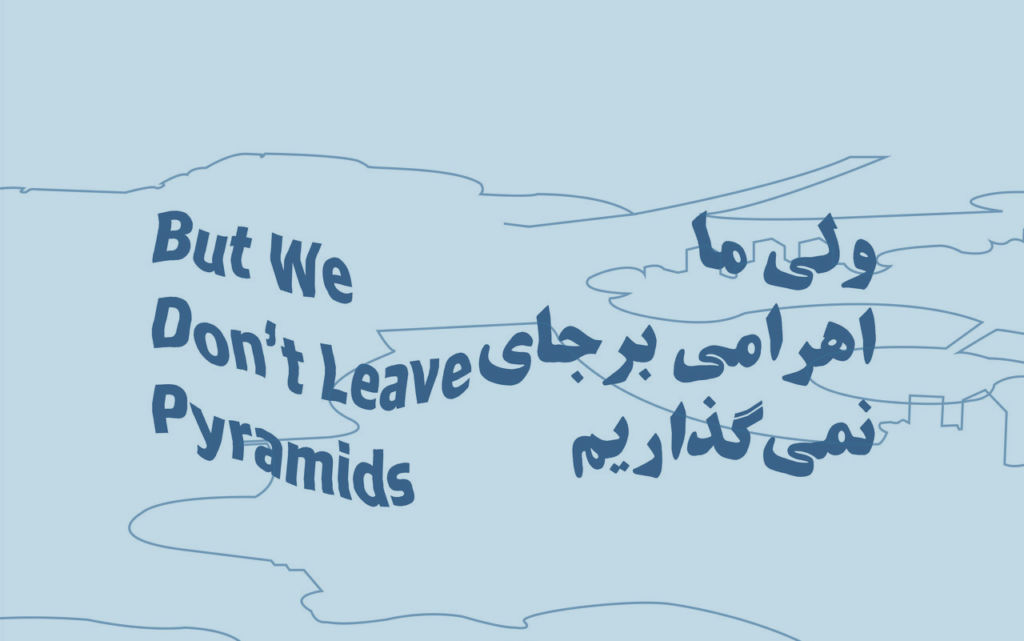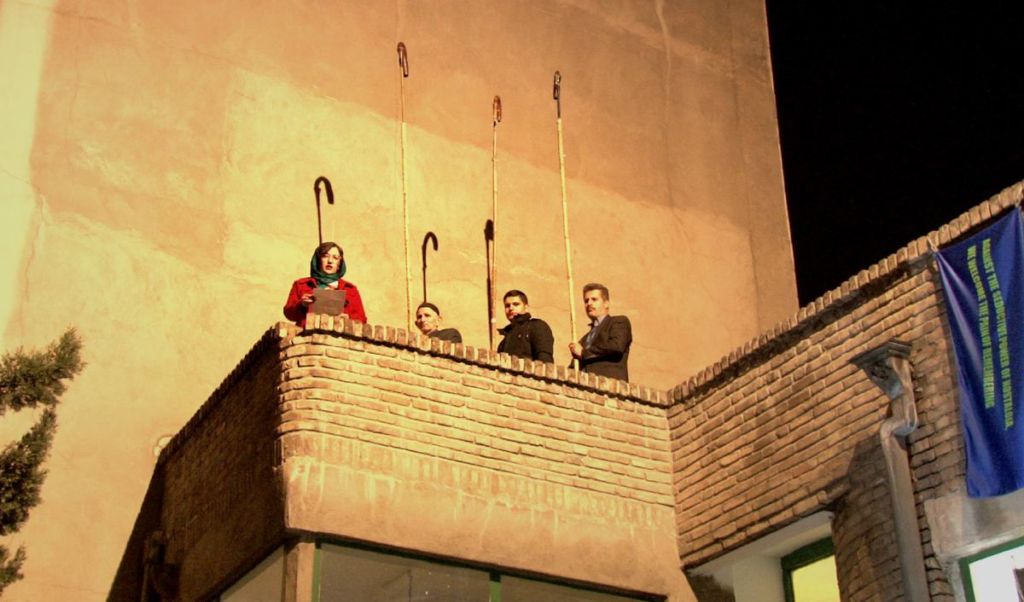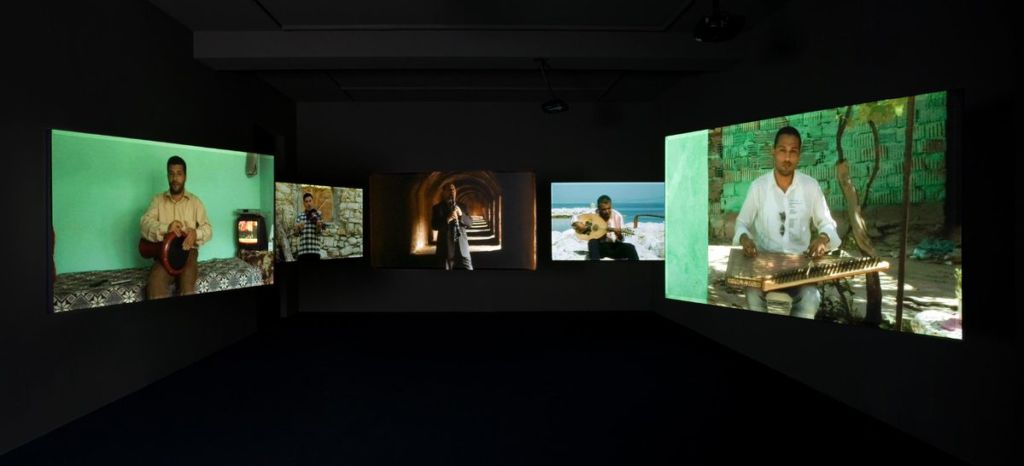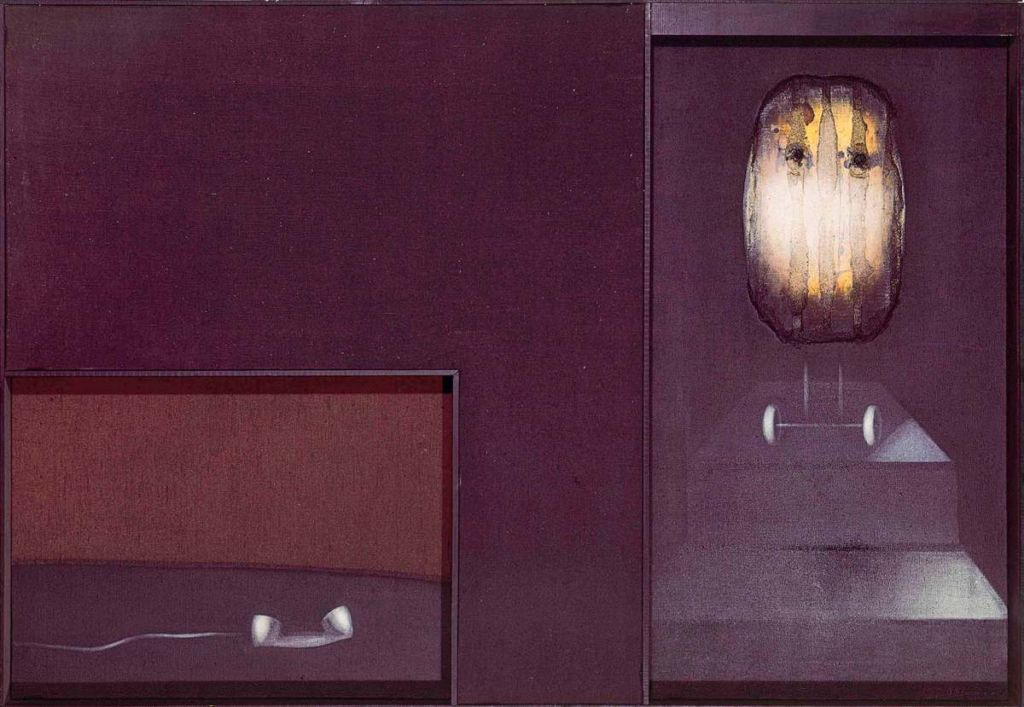Looking at the ensemble of what’s called post-colonial art, art articulated around the effects of colonialism, and more broadly the construction and deconstruction of individuals and the domination and power networks they are caught up in, it’s very hard to find meaningful work that doesn’t slip into stereotypical considerations. Recent years have seen a whole swath of work foregrounding a combination of modernist aesthetics and all sorts of exotic variations, meant to demonstrate the thesis that a hybrid art has been produced by the conflictual and yet common history of the West and its former colonies. While Nkanga’s work has broken free of this reductionist logic, nevertheless it is the fruit of her efforts to found new paradigms for thinking and making art that are not centered on concerns unique to “white” people.
Extrait d’un texte de Gauthier Lesturgie publié dans la revue internet (contemporary and) suite à la présentation de l’œuvre Pursuit of Bling à la Biennale de Berlin en 2014. http://www.contemporaryand.com/fr/magazines/a-multitude-of-archipelagos/
Métis est dans la mythologie grecque ancienne, une Océanide, fille d’Océan et de Téthys. Elle incarne la sagesse et la ruse. Le terme Mestis désigne par ailleurs un être ou une forme qui peut être composée de la moitié d’une chose, moitié d’une autre.
What makes Nkanga’s work so original is first of all her iconography. At first sight it seems to be a vocabulary comprised of banal and repetitive images governed by the kind of visual protocols associated with computer-assisted graphic art. The palette is also repetitive, almost isotopic, generally alternating between various warm, reassuring tones. Yet the tangle of eclectic signs makes this imagery far more complex than it may seem. Bodies are destructured and amputated, but always highly active, as in Filtered Memories (1990-92): Survival (1990-91), F.G.C. Shagamu (2010), where a woman with many arms reads, sows, cultivates and sweeps; she also seems to be drawing the structure she is standing on. These arms are disjointed but connected by ropes, roots and branches. The background landscapes areflat, either stacked stratifications or linked to one another. Sometimes they are suspended in a void, at others they are deeply anchored in the earth. “What I understand by the concept of Earth is not limited to the ground, territories or the planet; for me it’s tied up with connectivity and the conflicts we attach to the spaces we occupy, and the way human beings try to find solutions through simple acts of innovating or repairing,” Nkanga explains.
No univocal messages
This way of connecting the earth and human activity is also to be found in her most protean productions. One of the installations in the In Pursuit of Bling (2014) series is an outstanding example. Comprised of two large tapestries hanging back to back and twenty-eight tables of different sizes and heights, it illustrates the stages in the circulation of minerals from Africa. The stones are simply sitting, embedded in concrete and hanging. Their rather academic arrangement reveals their perpetual transformation and industrial predestination. The ensemble reflects the exploitation of the Earth by human beings, and at the same time, since most mining companies are Western-owned, the dominant powers’ exploitation of the countries they dominate. But Nkanga refrains from delivering a univocal message. For instance, In Pursuit of Bling was shown in an autumn 2015 exhibition at the MHKA in Antwerp whose title, Bruises and Lustre, revealed much about her thinking. First, the Earth is bruised by processes driven by our own attraction to bling. Second, many of her pieces, such as Solid Maneuvers (2015), for example, are lustrous. This sculptural rendition of the concave and convex topographies of quarries and open-pit mines is studded with reflecting silver, as if to contrast the violence of mining and our attraction to the stones whose extraction requires human destruction of the landscape.
This is also why Nkanga often uses mica, a mineral whose name comes from the Latin word micare, which means to shine, another word linked to the term bling whose aesthetic and sociological connotations are clear. But mica is also known for the laye red texture that allows it to exist in multiple forms. “Because of its properties as an effective thermal and electrical insulator, it is often used in construction and machinery… As a powder it’s used in the manufacture of cosmetics, and industrial plastics and paint. In its raw state, usually carved and polished, this mineral is valued for its aesthetic qualities, and it’s used to decorate jewels, clothing and other accessories.”1 Thanks to its incredible malleability and many properties, for centuries it has been a core commodity in the economic, political and anthropological exchanges this artist explores and integrates into her work. In addition to her hyperbolic representations, Nkanga also intervenes in reality directly. At the 2014 São Paulo biennial she engaged in exchanges with several Brazilians, from different walks of life but all, professionally or intellectually, closely linked to the Earth, such as geologists and other scientists, housing and land activists, farmers and craftsmen. These dialogues gave birth to a series of objects Nkanga made, with absolutely no hierarchy among them so as to avoid creating levels of interpretation for each participant. She transformed this constellation of first-hand accounts into a sprawling installation with the highly appropriate title Landversation.
Unstable equilibrium
Nkanga also makes documentaries, such as the cycle of photos called Dolphin Estate (2008), about prefab housing in Lagos, and The Green Hill (2015), a filmic inquiry into the Tsumeb region in Namibia, known for its crystal minerals and copper. But her performances are the most surprising aspect of her work. Based on attitudes that are neither confrontational nor empathetic, these actions at first seem as enigmatic as her images. She often performs in the middle of a circular stage, manipulating her artworks, bringing together African oral culture and her own unique movements to produce a meditation on her personal aesthetic and ideological ambivalences. The mix is disturbing, non-doctrinal and still less demiurgic.
What is the meaning of these recurrent actions and connections? They correspond to what Richard Sennett calls “an ethics of cooperation.”2 Distrusting illusory utopias and naïf evangelism, this American sociologist distinguishes between cooperation as a model of production, and solidarity, which simply perpetuates the castrating power of certain ideological and economic powers. Sennett argues for the free association of the most diverse skills so as to create communities that are based not on ethnic, religious or sexual identities but rather common activities. He also situates Homo faber at the core of social organization based on ethical cooperation. In his book The Craftsman, he argues, “Craftsmanship names an enduring, basic human impulse. Craftsmanship cuts a wider swath than skilled manual labor; it serves the computer programmer; the doctor, and the artist; parenting improves when it is practiced as a skilled craft, as does citizenship.”<3 Craftsmen apply a kind of practical, mischievous and cunning intelligence associated with the Greek figure Metis, from which Greek derives the word for wisdom and cunning4. It implies both knowledge of the situation and of the art of combination, and therefore an essential ability to adapt to the constraints of power.
In Nkanga’s practice, the hand and what it does are a representation of the need to adapt to the opposing forces in life, and at the same time the links between people, and between people and their environment, even under the most uncertain conditions. Her piece Fragilologist’s Predicament (2011) is an excellent metaphor for this, a visual manifesto. Two folded panels covered with woven fabric, six meters high by three meters wide, seem to be overpowered and crushed by the surrounding architecture. The motifs represent a vast network of carved up bodies, landscapes and objects. They float in space, and yet the dots are connected by an almost cosmological diagram. The title refers to a precarious situation, an unstable equilibrium between human beings and the world. Taken together, however, these elements constitute an ensemble that is difficult for our eye to deconstruct into its component parts. Nkanga thinks dialogically, which, far from preventing coherence in her work, serves as its wellspring.
Translation: L-S Torgoff
Thanks to Fabienne Leclerc, Antoine Laurent et Artpress


